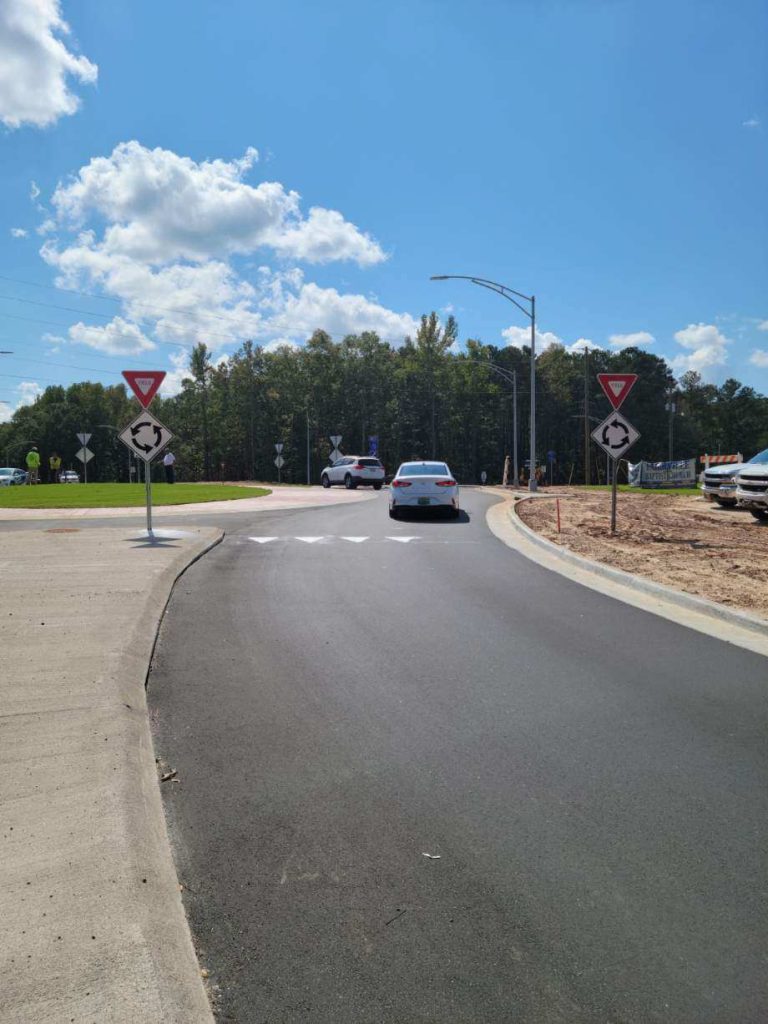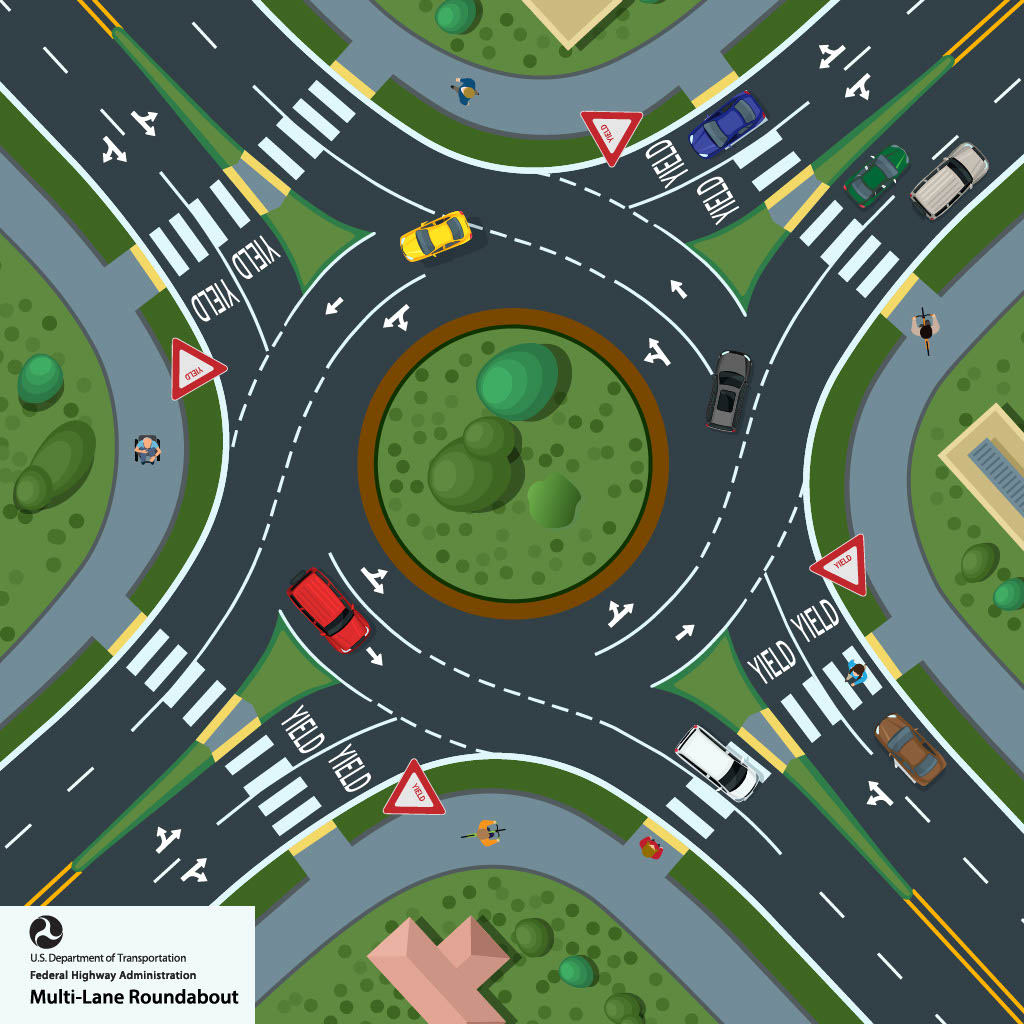If drivers think they are seeing more roundabouts along their routes in Alabama, they are correct. These circular intersections are proving to be safer and more efficient when it comes to moving traffic, even when compared to four-way stops and traffic signal intersections.
According to the Insurance Institute for Highway Safety, roundabouts reduce overall crashes by 39% and serious crashes by up to 90%. In addition, they can cut down traffic jams by as much as 75%.
The roundabout at the intersection of Farmville Road and N. College Street in Auburn, Ala. is proving to be successful in reducing crashes and injuries. From December of 2017 to October of 2020, the intersection saw 24 crashes, ten of which had serious injuries to the drivers. Since the installation of the roundabout in October of 2021, this number has gone down to just four crashes with no serious injuries to the drivers.

Benefits of Roundabouts
While it might take time to get used to driving a roundabout, the benefits will soon be obvious. The curved approaches lead to reduced vehicle speed. The circular movement of vehicles in the intersection minimizes conflict points where crashes could happen. Therefore, crashes that cause injury or fatality are substantially reduced.
Roundabouts are not only a safer type of intersection, but they are also efficient in terms of keeping traffic moving. Even while calming traffic, they can reduce delay and backups when compared to other intersection alternatives. Also, the lower vehicle speeds and reduced conflict environment makes it a better environment for walking and bicycling.
Roundabouts can be implemented in both urban and rural areas under a wide range of traffic conditions. They can replace signals, two-way stops, and all-way stops. Roundabouts are an effective option for managing speed and transitioning traffic from high-speed to low-speed environments, such as freeway interchange ramp terminals, and rural intersections along high-speed roads.
Tips for Navigating a Roundabout
- Slow Down
- Going slower provides more time to make decisions and be better prepared to yield to other road users.
- By entering the roundabout at a slower speed, crashes that do happen are much less severe.
- Slowing down helps drivers do a better job seeing pedestrians and bicycles.
- Look Around
- Drivers should choose the lane for where they want to go after the roundabout. Signs and markings help them select a lane.
- Like most other intersections, drivers use the left lane to go left, the right lane to go right, and either lane to go straight through, unless otherwise indicated.
- Drivers should keep looking around and check the crosswalks to see if anyone is waiting to cross or is already crossing. Drivers should be ready to stop and let them safely cross.
- Be Ready to Yield
- Drivers must yield to traffic in all lanes of the roundabout, not just in the lane closest to them.
- If large vehicles such as trucks or buses are in the roundabout, drivers should give them space and avoid driving next to them inside the roundabout.
- Drivers should follow the pavement markings to stay in the correct lane as they leave the roundabout. They should look around one more time for anyone in the crosswalk and be ready to yield as the drivers exit.
For more information on roundabouts please visit the Federal Highway Administration website.




